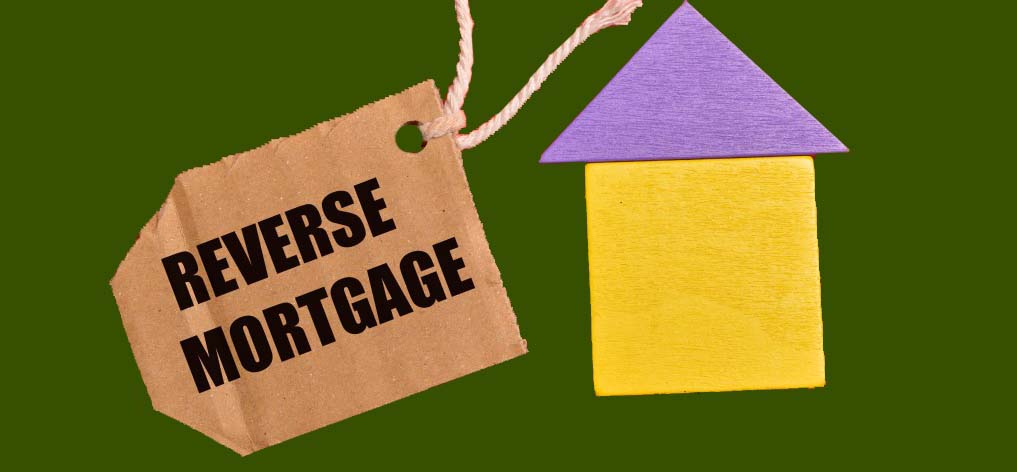Reverse Mortgage – Stuck In One or Wants One
Almost every senior needs financial resources to live comfortably in their later years. Many seniors turn to their home as a way to get cash. Reverse mortgages offer the allure of getting paid to stay in your home. For some seniors these are good loan options, for others they are not. What are the issues? What do you need to know about the issues?

Home Equity Conversion Mortgages
All discussions below involving reverse mortgages refer only to U.S. Federal Government-backed loans technically called a Home Equity Conversion Mortgages (HECM) available through an FHA-approved lender.
Difference Between Reverse Mortgage & Regular Mortgage
Reverse mortgages are similar to regular mortgages except for repayment. In a reverse mortgage, instead of the borrower paying the lender, the lender pays the borrower. The lender can pay a lump sum to the borrower or pay the borrower a monthly payment. The name “reverse mortgage” comes from this reversal of payments.
Lender Risks
Because the lender pays the borrower over time and cannot recoup the payment for making the loan until the borrower dies or leaves the home, the lender takes on two risks not associated with traditional loans: (1) payments to the borrower are not paid back for many years (and the exact date of repayment is not known), and (2) the potential value of the home may change. Note: borrowers can pay off the loan sooner, but they don’t have to.
Compensation for these risks comes from increasing the fees and rates associated with reverse mortgages and limiting loan-to-value rates. When computed similarly to traditional home loans, interest rates are 1%-3% higher. Loan to value rates are limited to 80% loan to value and often less to account for their additional costs and risks.
Reverse Mortgage Costs Are Higher Than Regular Mortgages
The bottom line is that reverse mortgage loans cost more than traditional loans. However, these increased costs may be worth it if the borrower does not have the desire or ability to seek and get alternatives.
An example might be an elderly widowed spouse wanting to remain in her home, being cared for by professional caregivers, without family members interested (or capable) in actively participating in her care or trying to assist with managing a traditional loan. In this case, the best option for additional funds to remain in her home may be the home itself. And because there is not a good or easy way to get and manage a traditional loan, a reverse mortgage may be the best option.
Home Equity Conversion Mortgages In More Detail
The FHA program for a Home Equity Conversion Mortgage (HECM) is fairly uniform in its structure. It has the following areas.
HECM Loan Program
Loan programs enable you to withdraw equity in your home. Depending on the lender, and whether you want a fixed rate or variable rate HECM you can take this equity in the form of monthly payments, a lump sum, or a combination. You can also take it in the form of a line of credit.
HECM Terms & Definitions
Tenure
Time addressing the (1) monthly payments of equal amounts and (2) residency of at least one borrower living and occupying the property as a principal residence
Term
Equal monthly payments over a borrower selected fixed period
Line of Credit
Unscheduled payments or in installments, at times and in an amount of your choosing until the line of credit is exhausted.
Modified Tenure
Combination of line of credit and scheduled monthly payments for as long as you remain in the home.
Modified Term
Combination of a (1) line of credit and (2) monthly payments over a borrower selected fixed period of months
Single Disbursement
Is a lump sum payment
Basic Borrower Requirements
Borrower Qualifying Requirements
Eligible Property
Getting Out of A Reverse Mortgage
Like most loans, you have a three-day rescission period. If it’s been three days or less since you’ve signed your loan document, you can use the rescission clause to cancel your loan.
If it has been more than three days, you have to exit the loan by paying off the balance. This may require you to sell the house, or to take out a standard loan. In either case, you’d use the proceeds of the sale, or the new loan to pay the balance of the reverse mortgage.
Other Resources For Reverse Mortgages
See the U.S. Department of Housing and Urban Development’s Section on reverse mortgages here.
See our Section on Standard Mortgages here.